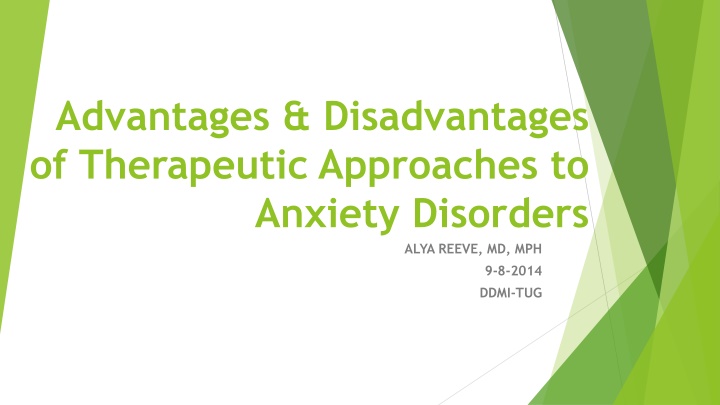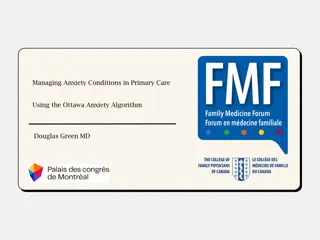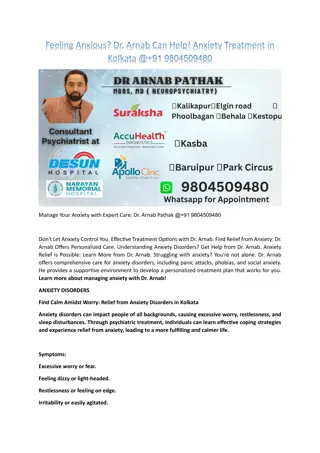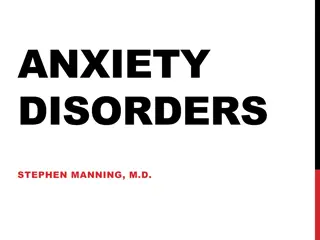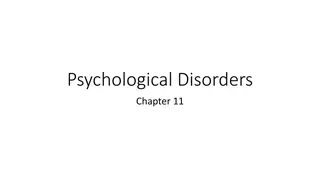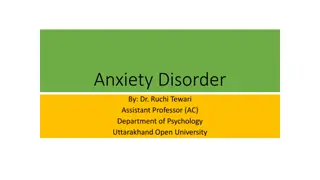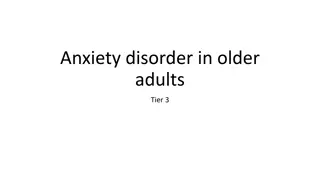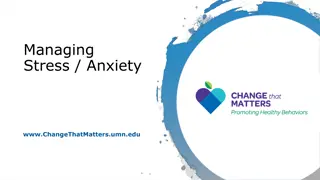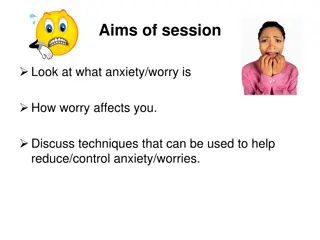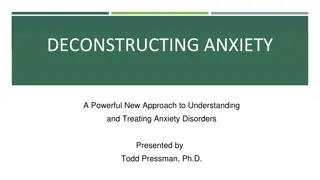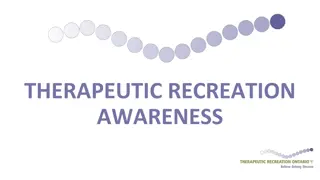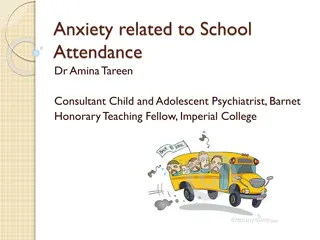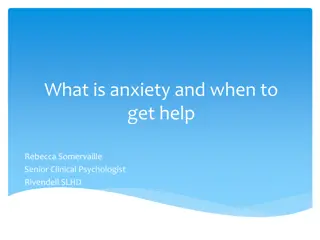Therapeutic Approaches to Anxiety Disorders: Advantages & Disadvantages
Therapeutic approaches to anxiety disorders have both advantages and disadvantages. Explore the impacts of internal and external factors, understanding physiological responses, and how to modulate internal factors. Gain insights into the sympathetic and parasympathetic nervous systems, neurotransmitters, and their effects on stress response hormones like cortisol.
Download Presentation

Please find below an Image/Link to download the presentation.
The content on the website is provided AS IS for your information and personal use only. It may not be sold, licensed, or shared on other websites without obtaining consent from the author.If you encounter any issues during the download, it is possible that the publisher has removed the file from their server.
You are allowed to download the files provided on this website for personal or commercial use, subject to the condition that they are used lawfully. All files are the property of their respective owners.
The content on the website is provided AS IS for your information and personal use only. It may not be sold, licensed, or shared on other websites without obtaining consent from the author.
E N D
Presentation Transcript
Advantages & Disadvantages of Therapeutic Approaches to Anxiety Disorders ALYA REEVE, MD, MPH 9-8-2014 DDMI-TUG
Normal Anxiety Alerting to danger Protection Attention focus Performance Reactivity to CHANGE
Anxiety Disorder Doesn t give the nervous system a rest Groups of disorders (changes in DSM-5) GAD Agoraphobia Panic Disorder OCD OCPD Obsessions PTSD Specific trauma Acute traumatic experience
Therapeutic Opportunities A. Internal Factors Physiological responsiveness Priming by past experiences Age Mindset; meaning B. External Factors Events Ambience Context Frequency
Understanding the Internal Factors Physiology Parasympathetic nervous system HR, pulse, BP; pupil dilation; increase blood flow to muscles Tissue systems Nervous; Muscular; Endocrine Neurochemicals Adrenaline; noradrenaline Cortisol
How do we modulate Internal Factors? Direct Block physiologic changes beta- and alpha-blocking medications raise/lower neurotransmitters thyroid replacement/blocker Carotid massage Indirect Hormones Messages from CNS
Neurotransmitters Ach = acetylcholine N = nicotinic M = muscarinic NE = norepinephrine Epi = epinephrine D = delta
ANS affects stress response hormone system Cortisol Regulation of levels Effects on glucose metabolism Sleep-wake cycle Membrane integrity Stress responses
Multiple Ways to Affect the stress response system
Need Different Ways to Modulate the ANS Pharmacology SSRI; TCA; SNRI; BZD; atypical neuroleptics; AED Alcohol; opioids less effective/more depressive; THC +/- Complementary and Alternative Medicine Acupuncture Massage techniques Mind training: meditation; mindfulness Nonverbal therapy Art therapy Music therapy Somatic directed psychotherapy
+/- modulating responses to stress Exposure Graded doses of stressor Flooding can be risky Dietary changes/fads Avoidance Psychological defenses Denial
Psychotherapies Individual Group Many types: gender; experience; age Open/closed; frequency; boundaries Family Cognitive-Behavioral Dialectic-Behavioral
Developing a strategy Assessment of primary and secondary symptoms Careful understanding of meaning and etiology of Sx. Individual strengths, weaknesses, preferences What are local resources? Using modalities long enough to have an effect Too short to have effect is not a trial Too long is an unbroken habit Re-examine change/progress at regular intervals
Conclusions Anxiety may need to be treated Pharmacology may not be best treatment for an individual Silence does not mean effective end point reached Combination of traditional and complementary techniques usually most effective Individual variation is the norm Thank you for your attention & participation!
